Choosing the Right Sinker: Types, Weights, and When to Use Them
Share
Sinkers are one of the most important and underrated pieces of fishing gear. Their primary purpose is simple: get your bait or lure to the depth you need and keep it there. Using the right sinker weight and type can be the difference between natural bait presentation and wasted time in the wrong part of the water column.
Why Sinker Weight Matters
Different environments require different sinker weights. The aim is always to use the lightest weight necessary to maintain control and present your bait naturally.
If you use too much weight:
-
Your bait will look unnatural
-
Sensitivity is reduced, making it harder to detect bites
-
The splash on cast can spook fish in shallow or calm water
-
Bait movement becomes stiff and lifeless
If you use too little weight:
-
Your bait will drift out of the strike zone
-
You lose bottom contact in moving water
-
Slack line makes bite detection difficult
-
You may struggle to reach the depth fish are feeding at
Example:
You would not fish a 5-ounce sinker in a quiet estuary or lake with little water movement — it kills bait presentation.
On the other hand, a tiny ball sinker will not hold bottom in a fast-moving tidal channel or surf gutter.
Correct weight choice matches water movement, depth, casting needs, and species behaviour.
Common Sinker Types and Their Uses
Ball Sinkers
Best for: Estuaries, calm bays, slow tidal movement
Use: Running rigs, natural bait movement
Purpose: Allows bait to move freely and fall naturally through the water column. Ideal for whiting, bream, flathead, salmon trout and situations where subtle presentation is needed.
Bean / Oval Sinkers
Best for: Moderate tidal flow or current
Use: Running rigs where bait needs some movement but more control than a ball sinker
Purpose: Streamlined shape helps prevent rolling in current and keeps bait closer to the intended zone.
Pyramid Sinkers
Best for: Surf fishing and turbulent shore breaks
Purpose: Digs in and holds bottom in wave action and longshore drift. Ideal when you need your bait to anchor in a gutter or channel.
Star Sinkers
Best for: Heavy surf and strong sweep
Purpose: Greater bottom-holding power than pyramid sinkers. Keeps bait in position when waves and current are strong.
Bomb / Snapper Leads
Best for: Offshore reef fishing and deep water drops
Purpose: Gets bait down fast and holds vertical line angle. Used when depth and current make lighter weights ineffective.
Tear Drop / Dropper Leads (Paternoster Style)
Best for: Boat fishing above structure
Purpose: Clean vertical drop and strong bottom contact without excessive drift. Suited to paternoster rigs over reefs and rubble bottoms.
How to Choose the Right Weight
Fishing conditions dictate your sinker choice. Start light and only increase weight if needed.
Use heavier weight when:
-
Tidal flow is strong
-
Fishing deep water
-
Wind or swell increases line drag
-
You need longer casting distance
Use lighter weight when:
-
Water is calm
-
Fishing shallow flats or estuaries
-
Fish are cautious or feeding mid-water
-
Quiet presentation is critical
The rule remains constant:
Use only enough weight to maintain control and natural bait action.
Final Notes
Sinkers are not just weights — they are presentation tools. Choosing the right type and size helps you:
-
Reach the strike zone
-
Detect bites clearly
-
Maintain natural bait movement
-
Fish efficiently in changing conditions
Mastering sinker selection improves catch rates and makes you a more adaptable and effective angler.
